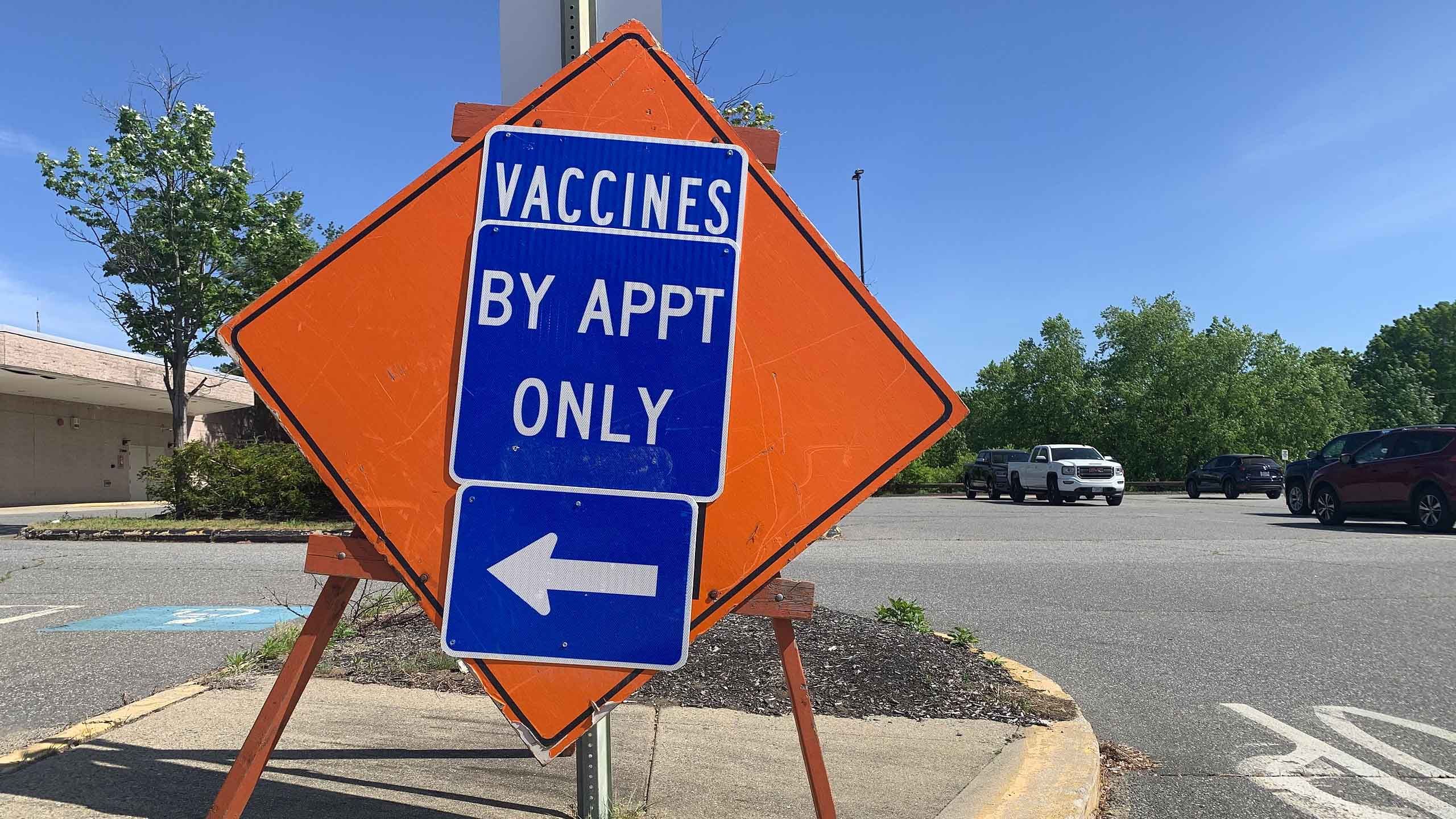A girl washes her hands while wearing a mask. Credit: Pixabay.
How to crush the variants that have kept the pandemic going
By Matt Field, September 28, 2021

It seems a day doesn’t pass without another alarming headline about COVID-19 vaccine efficacy or coronavirus variant-driven case surges. Those plans many people made earlier in the summer for post-vaccine reunions, playdates, or visits to grandma’s? They’re on hold or going forward only after infection-prevention protocols that might make an open-heart surgery team blush. While the current COVID wave might be cresting in some places, the fact that the delta variant wrought such disruption after vaccines became widely available in the United States raises a troubling question: Will the future look more like life under delta, or more like life during those few weeks or months of early summer when it seemed like the pandemic might be tamed?
It’s easy to have a sense of impending doom, to think that some mutant variant somewhere is lurking in the wings, ready to take the world back to immunological square one; given how quickly delta seemed to set back pandemic progress, the possibility might seem likely. Virus experts, however, say it’s not that simple. “If you talk to a lot of virologists, they're probably less scared of that happening in the immediate future than the average person,” Bowie State University virologist Kari Debbink says.
Debbink and other experts suggest the future of the pandemic might not be as bleak as many imagine. In some respects, she and others say, delta might be nearly as bad as the variants get. While there’s a lot of debate about booster shots, COVID-19 vaccines are still proving highly effective at keeping people out of the hospital and morgue. Whether people get boosters or not, or get vaccines for the variant of the day or not, the shots may continue to be effective for a long time to come.
Is delta as transmissible as COVID-19 gets?
Whatever pathway the SARS-CoV-2 virus took from bats—the reservoirs of other coronaviruses—to people, when it began circulating among humans, it had room to grow, to become more contagious, and to better evade immunity, virologists say.
More transmissible variants have dominated and driven case surges. Alpha, first reported in the United Kingdom, was more transmissible than the original Wuhan strain; delta is even more transmissible than alpha. The average delta-infected person spreads the disease to twice as many people as those infected with the original strain. And in terms of prevalence, delta is vastly outcompeting other concerning variants, World Health Organization (WHO) officials said on a Sept. 21 video question and answer session. That includes variants like the mu variant identified in Columbia, which may be worrisome in terms of its ability to evade vaccine protection.
“Right now, this virus and the latest strains of this virus are highly adapted to transmit between humans very efficiently, and that efficiency has increased over time,” Mike Ryan, a WHO official, said during the video session.
Like other coronaviruses, the SARS-CoV-2 virus has spike proteins jutting out from its spherical body. These spikes are how the virus infects cells, and delta appears to have mutations that make it better able to do this job. SARS-CoV, the coronavirus that caused the SARS outbreak in the early 2000s, for example, has only 10 percent of the spikes on its surface “primed” to readily infect human cells. For the original SARS-CoV-2, that figure was 50 percent. For delta, it’s 75 percent, virologist Vineet Menachery told Nature.
When it comes to transmissibility, Paulo Verardi, a virologist at the University of Connecticut, believes delta may be the worst SARS-CoV-2 can do.
“Personally, I think that with delta, we are very close to that limit,” Verardi says. “It could be that we may have a variant that will be 10 percent better, or maybe even 20 percent.”
Given that SARS-CoV-2 is a new human pathogen, virologists expected to see new variants emerge as increasingly fitter versions of the original virus jump through the hoops of natural selection. “A lot of times, you end up seeing more variants that would favor spread in the first couple years,” Debbink says. Eventually, she says, new variants will be less likely to have dramatic new capabilities: “It's like the virus just doesn't have as much new genetic space to kind of explore.”
RELATED POSTS

COVID-19 vaccines are still really good.
Based on data from Israel and elsewhere showing that COVID-19 vaccines are becoming less effective against infection and that booster doses could help to curb infections and transmission, the Biden administration in the United States had planned to roll out extra shots to the general population in September, something Israel is already doing.
But on Sept. 17, a committee of outside experts at the US Food and Drug Administration (FDA) disagreed with giving booster shots to the general public under age 65. Members of the committee were skeptical of the value of boosters for the general public, given that previous vaccinations are still protecting people against severe outcomes from COVID-19.
When people are infected or vaccinated, their immune system begins producing antibodies, molecules that can thwart a virus from infecting cells. The immune cells don’t just churn out one model; they create antibodies that target different parts of the intruder. In the case of COVID-19, the immune system generates antibodies to different targets on the spike protein. Even with variants, Debbink says, “it’s not like one mutation is going to make all those antibodies not able to bind anymore.”
That means, she says, there’s a “longer road,” ahead for SARS-CoV-2 before the virus can evolve to completely evade acquired immunity.
But antibody levels after COVID-19 vaccination are declining. That’s part of what’s driving the debate on boosters.
As those levels decline, a virus that might have been thwarted immediately could instead start an infection. Even then, other immune system cells can still gear up to defeat the intruder. After infection or vaccination, B cells churn out both antibody producing cells and memory B cells that can survive for years or more. If someone gets re-exposed to a pathogen, the memory B cells can start creating antibody-producing cells again to quickly re-start the antibody flow. Another type of cell, T cells, can divide into cells that both help the B cell response and into T cells that kill infected cells outright, an important contribution because these infected cells become little virus factories.
Research increasingly highlights the complex immune response generated by COVID-19 vaccines or infection. Infection, for example, can generate memory B cells as well as cells that live in the bone marrow that can churn out antibodies for a long time to come. And vaccination promotes a strong T cell response that both juices antibody production by the B cells and kills off infected cells.
Immunity against SARS-CoV-2 could eventually wane or the virus could become resistant to our antibodies, but “we have a whole bunch of other things, including something called the T cells,” Verardi says. In some cases, while an infection might start, the T cells “may give the heads up. They may provide a certain level of resistance to the virus. Perhaps, instead of having moderate disease, we end up only with mild, perhaps instead of having a severe, we end up with moderate,” he says.
While the virus may be evolving, parts the immune system can be expected to hold up against new variants. Benjamin Neuman, a virologist at Texas A&M University, compared variants to cars that look outwardly different but share common features. “Spike changes [are] like a paint job, but the parts underneath don’t vary much at all, and that is at least part of what T cells would target,” he says. “T cells aren’t at the right place to stop an infection, but they are great at helping to clean up infections. Same with B cells.”
Several sources of data point to declining vaccine effectiveness against infection.
A Centers for Disease Control and Prevention report on statistics from New York found that vaccine efficacy against infections dropped from about 92 percent to 80 percent as the delta variant rose to prominence between early May and late July. Interestingly, a report by vaccine maker Pfizer to the FDA said that, based on data from California, the decline in vaccine efficacy has more to do with the vaccine waning, rather than “delta escaping vaccine protection.”
Meanwhile, vaccine effectiveness against serious disease and hospitalization has remained high. Data from Israel, a country which vaccinated widely and aggressively early in its rollout, shows waning protection against infection. But it also shows strong protection against severe disease, although that, too, wanes over time. For people age 40 to 59, for instance, protection dropped from 98 percent at four months post vaccination to 94 percent at six months; for people 60 years old and up, protection against hospitalization dropped from 91 to 86 percent between those time intervals.
How to stop variants?
While not a perfect protection from infection against delta or other strains, vaccination can still reduce the chances that someone gets infected and cut the amount of time an infected person is able to transmit the virus. To prevent new variants, vaccinating additional numbers of people may have a bigger bang for the buck than giving boosters to the already immunized.
The chance that someone becomes infected, breeds a new variant, and transmits it successfully to someone else is low; the majority of the viruses circulating in an infected person, i.e., the pathogens that could go on to infect someone else, will not be mutants. But there are hundreds of thousands of COVID-19 infections recorded in the world each day. That means hundreds of thousands of new opportunities for a rare event—the spread of a new and more dangerous variant—to happen.
Controlling the spread of the disease is the only way to decrease the odds that such variants will emerge.
Like many experts, Verardi favors expanding vaccinations globally over giving booster shots to healthy, already immunized people.
“If everybody's thirsty in the desert, you want to get to the water as quickly as possible, and you want to drink as much as possible,” he says. “But we're not realizing that … [by] not taking care of the rest of the world, we are allowing each person that gets infected to become a test tube for new variants.”
By mid-September, only 4 percent of Africans had been fully vaccinated, compared with 54 percent in the United States and 65 percent in the United Kingdom, according to a BBC report. As world leaders gathered in New York for the UN General Assembly recently, US President Joe Biden pledged that the United States will to donate an additional 500 million doses of the Pfizer vaccine for vaccination efforts in poor countries, bringing the total number of vaccine doses pledged by the United States to 1.1 billion, according to Reuters. That leaves the world still short billions of doses, experts say. The WHO’s COVAX Facility, a program to distribute vaccines around the world, has so far fallen short of its targets and cut its 2021 goal by almost 30 percent, to 1.4 billion doses, according to the news service.
With COVAX struggling to meet its commitments and the US delivery not expected to be completed until next September, much of the world faces many more months of the pandemic without vaccines and the strong protection against disease and death they offer.
Was the “Russian flu” influenza—or a coronavirus we can learn from?
In 1891, the British doctor Henry Franklin Parsons, wrote a report for the British Parliament about the first influenza epidemic to strike the British Isles in 43 years. He collected reports from health officials in far-flung corners of the country, railway officials, fishing industry leaders, and others to tease out the details of how the disease spread and what its symptoms were. In 344 pages, he described a disease that seemed to spread to cities and ports of entry first and then to rural areas, that affected workers inside more than those outside, and that caused a wide range of symptoms, including headaches, eye pain, fever, and depressed mood.
The Russian flu—called that because the first cases were thought to have occurred after a harsh winter in present day Uzbekistan, then a Russian protectorate--is estimated to have killed 1 million people in outbreaks around the world.
In the report, Parsons spent considerable time trying to knock down a prevailing belief that atmospheric conditions or bad air could have caused the pandemic. Instead, he presented evidence that it was people who had spread the disease, citing, for example, agricultural, fishery, and railway data to make his point that the weather hadn’t caused the disease outbreak. On railways, he wrote, “[t]he proportion of cases of influenza has been greater among clerks, who are little exposed to air, but come in contact with many people, then engine drivers and fireman, in whom these conditions are reversed.”
But for all his efforts, Parsons couldn’t have known that the disease he described was in fact an influenza. For one, in 1891, scientists had yet to discover viruses. That would come when two researchers, working independently of one another, began to describe viruses through experiments on tobacco leaves in 1892 and 1898. It wasn’t until the 1930s when researchers identified a virus as the cause of influenza.
More recently another explanation for the Russian flu has gained some traction.
In 2005, a Belgian group dated the emergence of the human coronavirus (HCoV)-OC43 virus—one of four endemic human coronaviruses that now mainly cause cold symptoms—to around 1890. The researchers concluded that that’s around the time that the human virus split from a closely-related coronavirus that affects cattle; it’s also, of course, around the time the world found itself in the grips of a deadly pandemic.
“Interestingly, around the period in which the [bovine coronavirus] interspecies transmission would probably have taken place, a human epidemic ascribed to influenza was spreading around the world,” they wrote.
While some research has found that people born before the Russian flu pandemic had antibodies to the influenza strain implicated in a 1968 pandemic, evidence suggesting that the Russian flu was indeed caused by an influenza virus, the authors of the 2005 Virology article cast doubt on that conclusion. “It is tempting to speculate about an alternative hypothesis, that the 1889-1890 pandemic may have been the result of interspecies transmission of bovine coronaviruses to humans,” they wrote. Not only did the two viruses split at around 1890, but the pandemic virus caused more central nervous symptom symptoms that other influenza pandemics have caused, the group noted.
It’s a debate still “in the realm of theory,” science writer Helen Branswell wrote in STAT. If the Russian flu had been caused by a coronavirus, then the HCoV-OC43 virus followed a trajectory from severe to mild, a path along which SARS-CoV-2 could also proceed.
Children contract the common cold-causing coronaviruses early in life and don’t usually get very sick. Reinfection happens frequently, but these infections are mild. In a paper in Science, Emory University researcher Jennie Lavine and her colleagues created a model, based on assumptions about the four common-cold coronaviruses, to predict how long SARS-CoV-2 would take to reach a state in which most people are infected first in childhood and experience milder disease. This transition could take anywhere from a couple years to a few decades, according to the model, depending on how fast the virus spreads, which depends on factors such as how well vaccines suppress infections.
Debbink sees a mild future for SARS-CoV-2 as plausible.
“If I were making a bet, I would say that it's probably going to become endemic, but over time, it's also probably not going to seem like that big of a deal,” she says. “As far as timescale goes, I don't know.”
In an introduction to the Parsons report, a top British public health official at the time wrote, “we cannot feel particularly confident of our ability, under the existing conditions of society to successfully defend ourselves against a further outbreak.” The supposed influenza spread easily, and it would be hard to isolate infected “bread-winners of a community,” the official, George Buchanan, lamented. There was no reliable way, he wrote, to even distinguish the disease from the various “gripes, catarrhs, colds and the like—in man, horse, and other animal—that take to themselves the same popular title.”
Unlike Victorian-era British officials dealing with the Russian flu, governments now have the tests, vaccines, and policy options like paid leave to turn the corner on the pandemic. COVID could still continue to cause more disruption than many would have liked to imagine was possible after vaccines began rolling out. But that disruption need not extend to death and tragedy on a vast scale the way it does now. Though a brighter future is difficult to foresee in the current, delta-shadowed world, it’s just possible that the worst of this pandemic is past.
As the coronavirus crisis shows, we need science now more than ever.
The Bulletin elevates expert voices above the noise. But as an independent, nonprofit media organization, our operations depend on the support of readers like you. Help us continue to deliver quality journalism that holds leaders accountable. Your support of our work at any level is important. In return, we promise our coverage will be understandable, influential, vigilant, solution-oriented, and fair-minded. Together we can make a difference.
Keywords: COVID-19, vaccines, variants
Topics: Biosecurity, Disruptive Technologies














